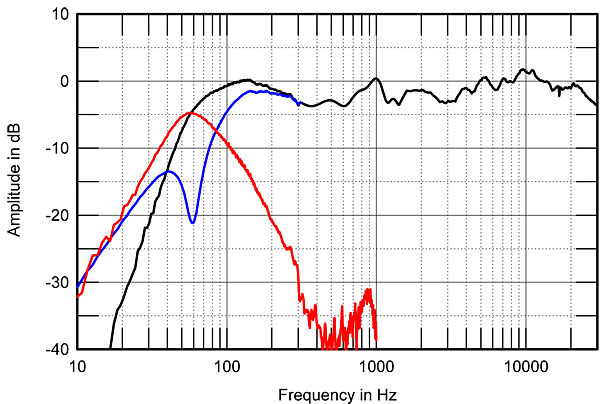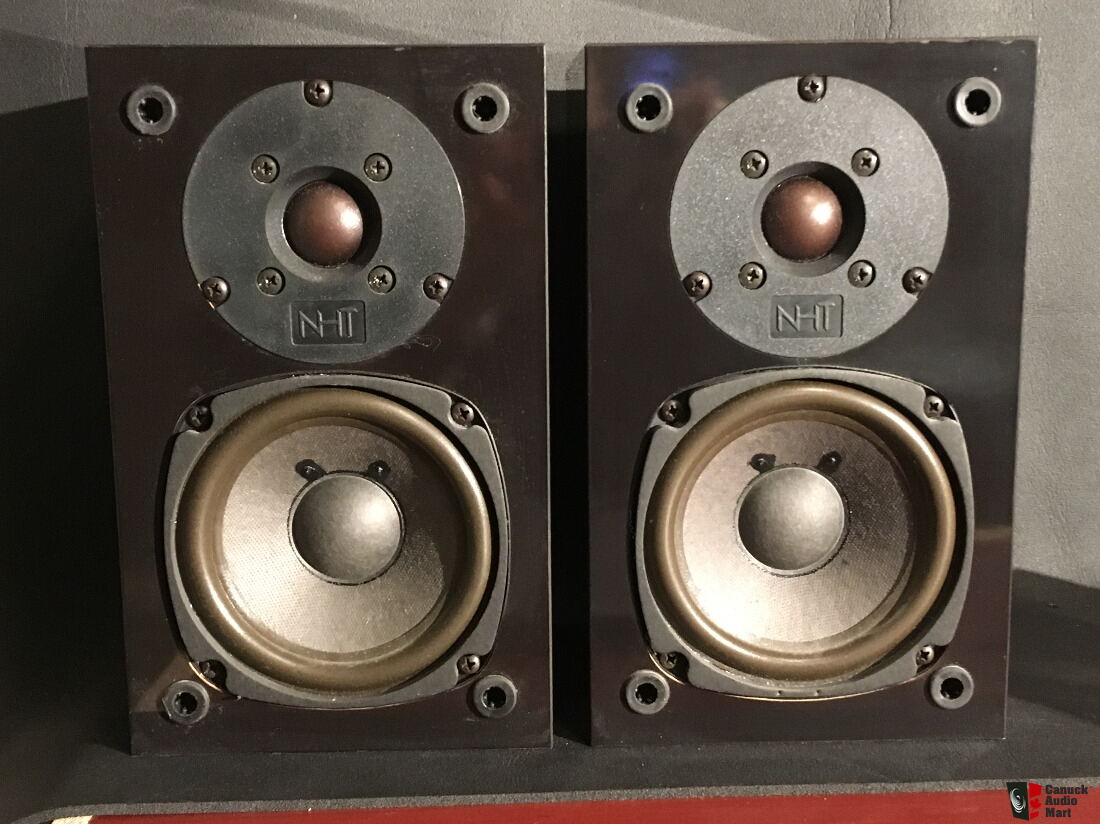Sorry to turn this into a ported vs sealed discussion, but I have seen so many misunderstandings on so many forums (and now Wikipedia) regarding the phase behaviour of ports that I've generated some graphs to demonstrate what they actually do to the signal.
Here's the modelled frequency response, phase response, and group delay for an 8" Visaton woofer in a 60L
ported box that is tuned to 35Hz:
Now here are same three graphs for the same woofer, now in a 60L
sealed box, EQ'd to have the
same frequency response as the ported box:
As you can see, the phase response / group delay of the two drivers are identical, even though one is a vented box and the other is a sealed box.
This is because literally nothing magically obnoxious happens to the phase response of a speaker when a port is added. The port simply takes the (already 180 degrees out of phase) back wave of the woofer in the inside of the box, inverts it (i.e. rotates it a further 180 degrees) and fires it out the port, and when the two sum outside the box we are simply left with a 360 degree phase rotation, exactly what we'd get with any old minimum phase 24dB/octave filter, whether digital, analogue electronic, or acoustic.
Indeed, the ported box
is a 24dB/octave minimum phase filter!
So of course this is exactly what we get if we take a sealed box with its inherent 12dB/octave roll off (i.e. 180 degrees of phase shift) and add an additional 12dB/octave high pass filter like I did above (along with some minimum phase EQ in this case to allow the FRs to match), resulting in a combined 24dB/octave minimum phase filter with its expected 360 degrees of phase shift.
How on earth the idea of adding an extra 180 degrees to what was already a 180 degree phase rotation became so horrifying to so many audiophiles is beyond me.
The explanation must come down to a few things I think:
- Misunderstandings about how a port works, especially the false belief that a port does something extra to the phase response beyond the minimum phase behaviour of the 24dB/octave high pass filter that it creates (and in some cases a failure to understand that sealed boxes do exactly half as much "damage" to the phase response anyway).
- Dogmatic belief in "transient response" as central to signal integrity, contrary to known evidence regarding audibility thresholds (although I leave myself just a glimmer of doubt on this one as most studies have focused on midrange phase rotations).
- Above all, plenty and plenty of examples of badly designed ports, especially those in boxes that should always have been too small for anything but sealed or passive radiator. These tend to turn out infinitely worse than badly designed sealed boxes because small errors or creativity result in big problems, and because there are many factors that need to be taken care of for a port to really behave properly.
Another thing that should be clear from this is that EQing or crossing over a ported speaker is no more complex with respect to phase than a sealed speaker. Of course you wouldn't do it near the port's tuning frequency - there's already a major 24dB/octave filter going on around there. But you wouldn't want to try to cross over any driver at any frequency where it's already in the middle of having a 24dB/octave filter applied to it.
(Incidentally, since we're dealing with nothing but minimum phase here, there'd be nothing wrong in theory with adding to the ported box's own 4th order crossover to create a higher order crossover, although I don't know why you'd want to do this unless desperate.)
And when you consider that, especially with active designs, properly porting the speaker will tend to gain you both significant bass extension and many dB of headroom (and by corollary, lower distortion at any given SPL), using
well-designed ports starts to make a huge amount of sense.
Indeed, if you're planning to implement minimum phase EQ in the bass (e.g. for room correction), the same resulting frequency response, whether derived from a ported or sealed speaker in the first place, will have exactly the same phase response / group delay. The only difference will tend to be that the ported speaker plays lower in frequency and higher in level, but unlike a sealed speaker will need to be protected at frequencies below that.


